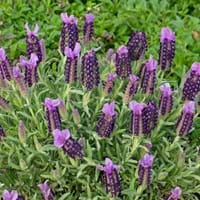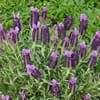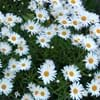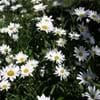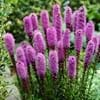Life Span
Annual and Perennial
Perennial
Type
Perennial
Bulb or Corm or Tuber
Origin
Mediterranean
South America
Types
Not Available
Pamianthe cardenasii , Pamianthe parviflora , Pamianthe peruviana
Number of Varieties
Not Available
Habitat
Mediterranean region
All sorts of environments
USDA Hardiness Zone
8-9
8-10
Sunset Zone
4, 5, 6, 7, 8, 9, 10, 11, 12, 13, 14, 15, 16, 17, 18, 19, 20, 21, 22, 23, 24
21,22
Habit
Cushion/Mound-forming
Clump-Forming
Flower Color
Purple, Blue Violet, Plum
White
Flower Color Modifier
Bicolor
Bicolor
Fruit Color
Not Available
Green
Leaf Color in Spring
Sea Green, Gray Green
Dark Green
Leaf Color in Summer
Sea Green, Gray Green
Light Green
Leaf Color in Fall
Sea Green, Gray Green
Several shades of Green
Leaf Color in Winter
Light Green
Light Green
Leaf Shape
Long Narrow
Strap shaped
Plant Season
Spring, Summer, Fall, Winter
Spring, Summer, Fall
Sunlight
Full Sun
Partial Sun, Partial shade
Type of Soil
Loam, Sand
Loam, Sand
The pH of Soil
Acidic, Neutral
Acidic, Neutral, Alkaline
Soil Drainage
Well drained
Average
Bloom Time
Late Spring, Early Summer, Summer
Spring, Late Spring, Early Summer, Summer, Late Summer
Tolerances
Drought
Drought
Where to Plant?
Container, Ground, Pot
Ground, Pot
How to Plant?
Seedlings
Offsets
Plant Maintenance
Medium
Medium
Watering Requirements
Average Water Needs
Keep the ground moist but not water-logged
In Summer
Lots of watering
Lots of watering
In Spring
Moderate
Moderate
In Winter
Average Water
Average Water
Soil pH
Acidic, Neutral
Acidic, Neutral, Alkaline
Soil Type
Loam, Sand
Loam, Sand
Soil Drainage Capacity
Well drained
Average
Sun Exposure
Full Sun
Partial Sun, Partial shade
Pruning
Remove damaged leaves, Remove dead branches, Remove dead leaves
Pinch or prune as they grow to promote branching and bushiness, Remove damaged leaves, Remove dead branches, Remove dead leaves, Requires little pruning
Fertilizers
All-Purpose Liquid Fertilizer
All-Purpose Liquid Fertilizer, High phosphorus
Pests and Diseases
Grasshoppers
Leaf spot, Mosaic viruses
Plant Tolerance
Drought
Drought
Flower Petal Number
Single
Single
Fragrant Bark/Stem
Yes
No
Foliage Texture
Fine
Coarse
Foliage Sheen
Matte
Glossy
Attracts
Bees, Butterflies, Hummingbirds
Bees, Birds, Bumblebees, Butterflies, Hummingbirds, pollinators
Aesthetic Uses
Showy Purposes
Beautification, Bouquets, Ornamental use, Showy Purposes
Beauty Benefits
Not Available
No Beauty Benefits
Environmental Uses
Air purification
Air purification
Medicinal Uses
Cold, Nausia, Treating fever, Wounds
No Medicinal Use
Part of Plant Used
Flowers, Seeds
Not Available
Other Uses
Air freshner, Used as an insecticide
Beneficial species for attracting pollinators, Decoration Purposes
Used As Indoor Plant
Yes
No
Used As Outdoor Plant
Yes
Yes
Garden Design
Bedding Plant, Container, Cutflower, Feature Plant, Herb, Vegetable, Mixed Border, Rock Garden, Wall
Bog Garden, Container, Feature Plant, Foundation, Mixed Border, Water Gardens
Botanical Name
Lavandula Stoechas
HYMENOCALLIS longipetala
Common Name
Topped Lavender, Spanish Lavender
Peruvian Daffodil, Spiderlily
In Hindi
Spanish Lavender
peruvian daffodil
In German
Spanish Lavender
peruvian daffodil
In French
Spanish Lavender
peruvian daffodil
In Spanish
Spanish Lavender
Pamianthe
In Greek
Ισπανικά Λεβάντα
peruvian daffodil
In Portuguese
Spanish Lavender
peruvian daffodil
In Polish
Spanish Lavender
peruvian daffodil
In Latin
Spanish Lavender
peruvian daffodil
Phylum
Magnoliophyta
Magnoliophyta
Class
Magnoliopsida
Liliopsida
Order
Lamiales
Asparagales
Family
Lamiaceae
Amaryllidaceae
Genus
Lavandula
Pamianthe
Clade
Angiosperms, Asterids, Eudicots
Angiosperms, Monocots
Tribe
Lavanduleae
Clinantheae
Subfamily
Nepetoideae
Amaryllidoideae
Number of Species
Not Available
Season and Care of Spanish Lavender and Peruvian Daffodil
Season and care of Spanish Lavender and Peruvian Daffodil is important to know. While considering everything about Spanish Lavender and Peruvian Daffodil Care, growing season is an essential factor. Spanish Lavender season is Spring, Summer, Fall and Winter and Peruvian Daffodil season is Spring, Summer, Fall and Winter. The type of soil for Spanish Lavender is Loam, Sand and for Peruvian Daffodil is Loam, Sand while the PH of soil for Spanish Lavender is Acidic, Neutral and for Peruvian Daffodil is Acidic, Neutral, Alkaline.
Spanish Lavender and Peruvian Daffodil Physical Information
Spanish Lavender and Peruvian Daffodil physical information is very important for comparison. Spanish Lavender height is 60.00 cm and width 60.00 cm whereas Peruvian Daffodil height is 61.00 cm and width 61.00 cm. The color specification of Spanish Lavender and Peruvian Daffodil are as follows:
Spanish Lavender flower color: Purple, Blue Violet and Plum
Spanish Lavender leaf color: Sea Green and Gray Green
Peruvian Daffodil flower color: White
- Peruvian Daffodil leaf color: Dark Green
Care of Spanish Lavender and Peruvian Daffodil
Care of Spanish Lavender and Peruvian Daffodil include pruning, fertilizers, watering etc. Spanish Lavender pruning is done Remove damaged leaves, Remove dead branches and Remove dead leaves and Peruvian Daffodil pruning is done Pinch or prune as they grow to promote branching and bushiness, Remove damaged leaves, Remove dead branches, Remove dead leaves and Requires little pruning. In summer Spanish Lavender needs Lots of watering and in winter, it needs Average Water. Whereas, in summer Peruvian Daffodil needs Lots of watering and in winter, it needs Average Water.
